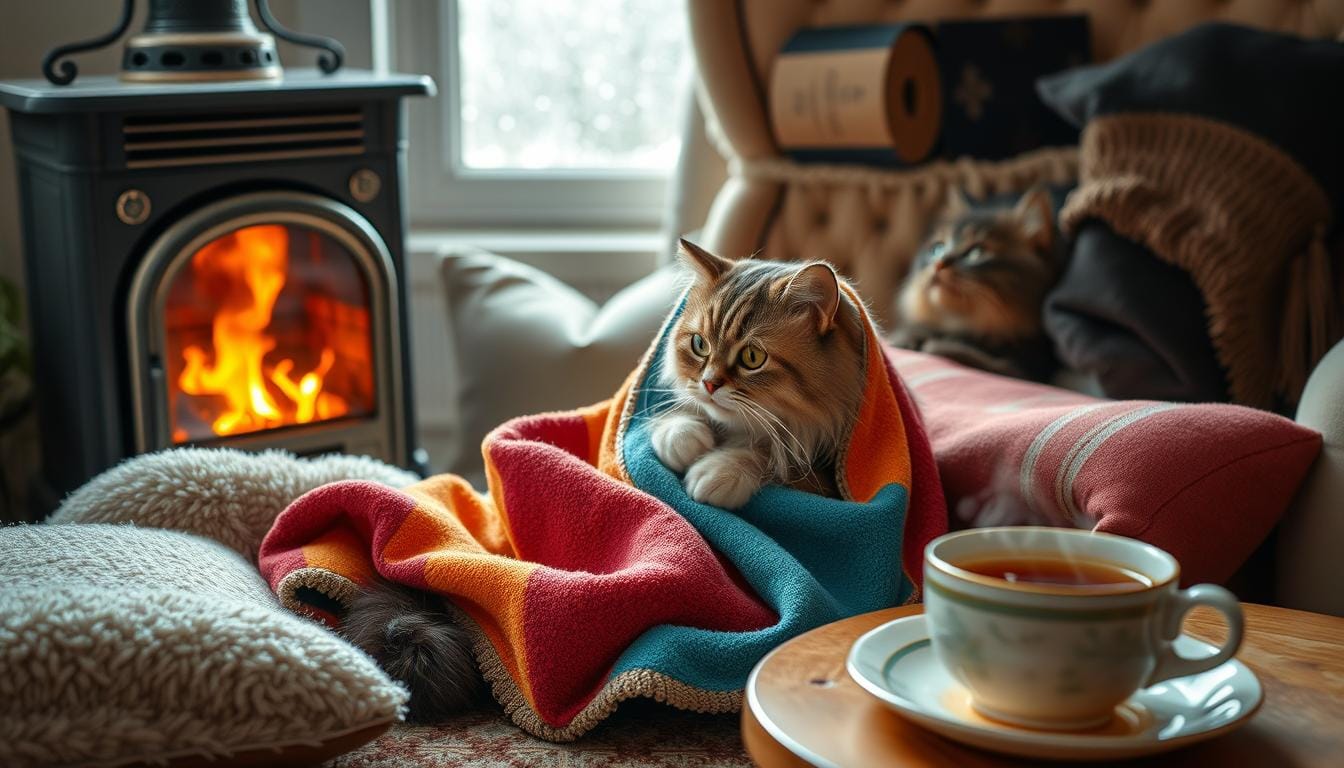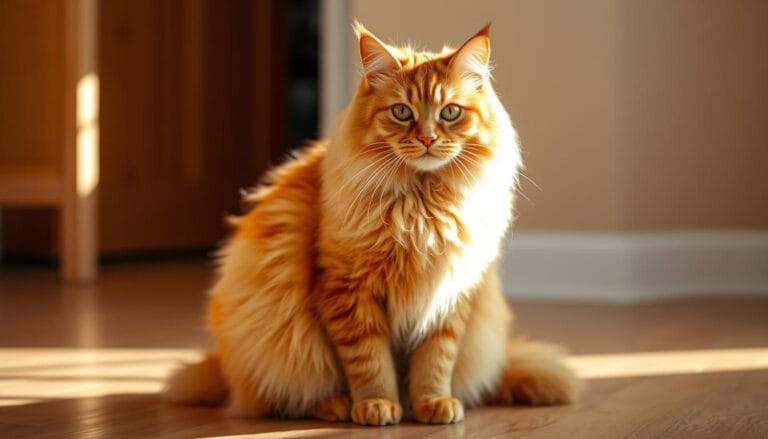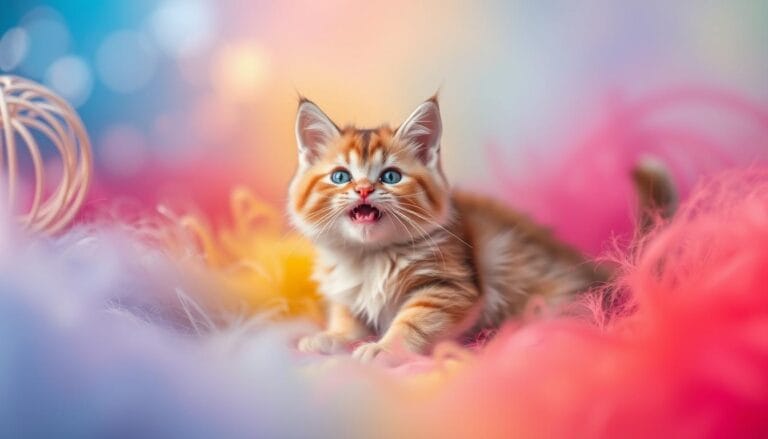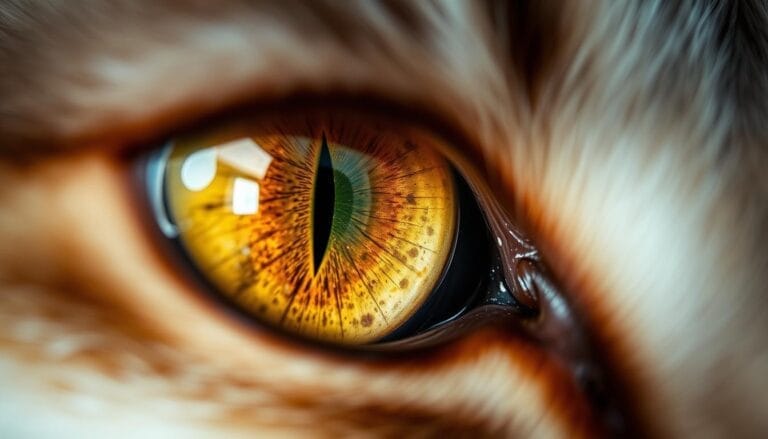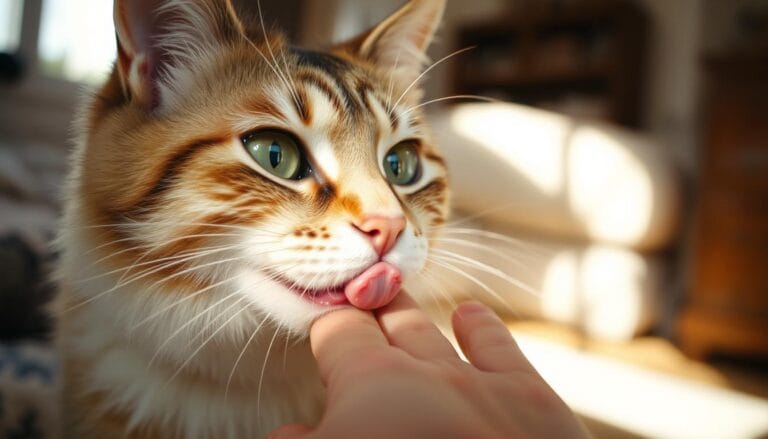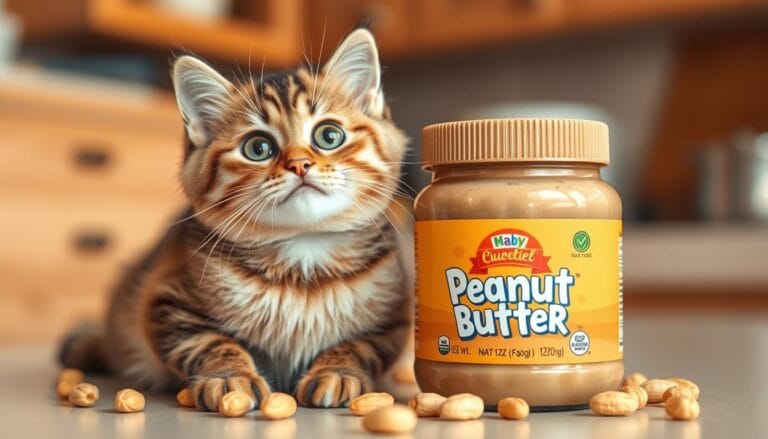Tips to Help Your Wet Cat Feel Comfortable and Cozy
Did you know that about 80% of cat owners face challenges when their cat gets wet? Helping a wet cat feel comfortable can be tough. But, knowing the right steps can make a big difference in keeping your cat calm and cozy.
Table of Contents
Cats usually hate water, and getting wet can stress them out. Whether your cat got wet in the rain, got splashed, or needs a bath, it’s important to know how to handle it. The goal is to make a warm, safe space for your wet cat to feel secure and comfortable.
This guide will show you how to care for a wet cat. You’ll learn about their natural reactions and how to comfort them. You’ll see how to turn a stressful moment into a chance to bond and care for your cat.
Key Takeaways
- Cats experience significant stress when wet
- Quick and gentle drying is essential
- Creating a warm environment helps cats feel safe
- Patience is key when handling a wet cat
- Proper technique can lessen your cat’s discomfort
- Temperature control is vital for cat comfort
Understanding Why Cats Get Wet and Their Natural Response
Cats have a special bond with water, thanks to their desert ancestors. Even though they’re known for staying dry, they can get wet in certain situations.
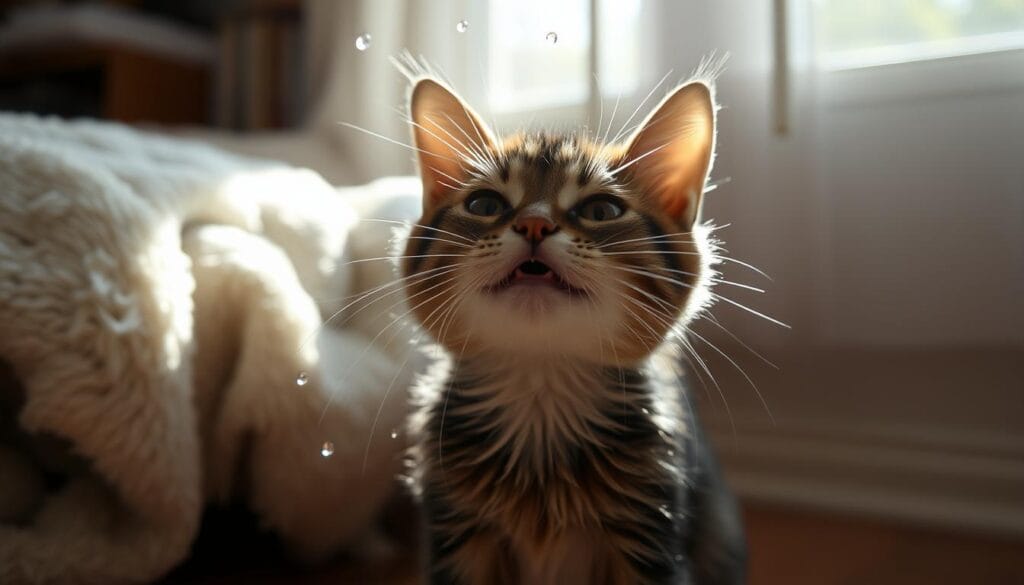
Domestic cats come from the Near Eastern Wildcat, which stayed away from water. They spend a lot of time grooming to stay clean and dry, about 30 to 50 percent of their day.
Common Situations Leading to Wet Cats
- Accidental water spills
- Unexpected rain encounters
- Bath time necessities
- Veterinary cleaning procedures
Natural Cat Behaviors When Wet
When a wet cat gets wet, they usually:
- Vigorous shaking to remove water droplets
- Seeking warm, dry surfaces
- Intense grooming to restore fur condition
- Displaying signs of discomfort
Physical and Emotional Impact on Cats
A wet cat’s coat can feel heavy, making them feel exposed. Some cats, like the Turkish Van and Bengal, have coats that resist water better than others.
While most cats shy away from water, they’re curious about moving water. Their 200 million scent receptors help them tell fresh from stagnant water, which might explain their water preferences.
Creating a Warm and Safe Environment for Your Wet Cat
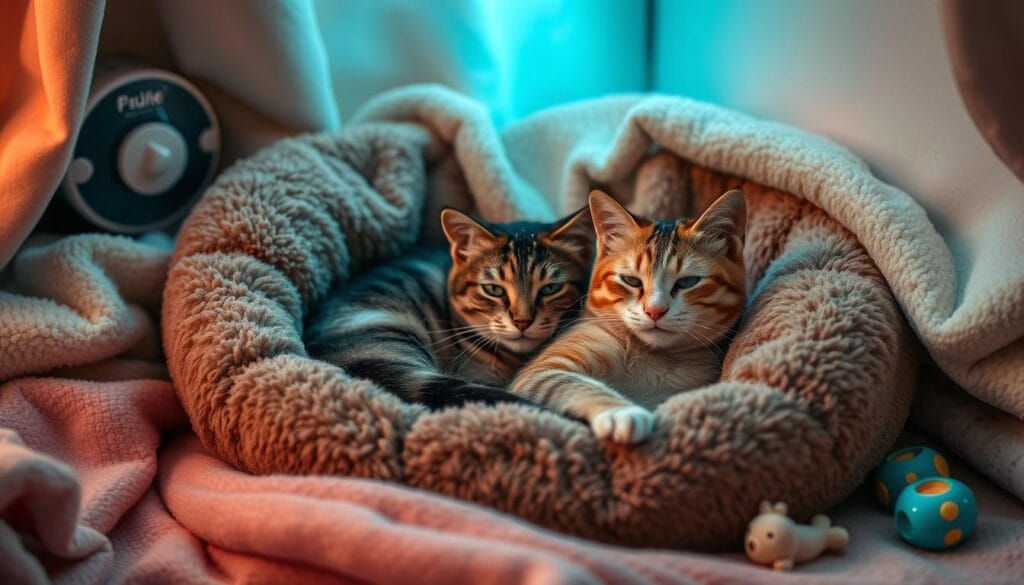
When your wet cat needs comfort, creating a safe space is key. Cats are sensitive and need special care when they’re wet. The right environment can greatly help your cat feel secure and warm.
Think about setting up a special area for your wet cat. This spot should have a few important features:
- Quiet and draft-free location
- Consistent warm temperature
- Soft, familiar bedding
- Away from high-traffic areas
Using warm, easy-to-digest wet food can also help. It keeps your cat warm and fed while they dry. Try to keep the room at 70-75 degrees Fahrenheit for the best comfort.
Place your cat’s favorite blanket or bed in this area. Cats naturally seek warmth and comfort when feeling vulnerable. So, making a cozy space helps them relax and feel less stressed.
- Use heated cat beds for extra warmth
- Minimize sudden movements or loud noises
- Keep the area clean and welcoming
Every cat is different when they’re wet. Be patient and gentle. This will help your cat feel safe and supported during this time.
Essential Supplies for Drying Your Wet Cat
Dealing with a wet cat needs the right tools and preparation. The right supplies make drying quick, comfortable, and stress-free for both you and your cat.
Towel Selection for Maximum Absorption
Choosing the right towel is key when your cat is wet. Here are some top picks:
- Microfiber towels – super absorbent and quick-drying
- Specialized pet drying towels with high moisture-wicking capabilities
- Soft, lightweight cotton towels for sensitive cats
Professional Drying Tools
Professional tools can efficiently dry your wet cat:
- Low-heat pet hair dryers designed for animal use
- Quiet dryers to minimize cat anxiety
- Dryers with adjustable speed settings
Natural Drying Aids
Natural methods can be gentle and effective for drying a wet cat:
- Soft grooming mitts for absorbing moisture
- Pet-friendly wet wipes for spot drying
- Warm blankets to help your cat self-dry
Remember, every wet cat is different. Be patient and gentle during drying. Keeping your cat comfortable is always the top priority.
Proper Techniques for Handling a Wet Cat
Dealing with a wet cat needs patience, gentleness, and calmness. Your wet cat might feel scared and stressed. So, knowing the right ways to handle them is key for both you and your cat.
When you approach a wet cat, keep these tips in mind:
- Move slowly and speak softly to avoid startling your wet cat
- Use gentle, supportive movements when picking up your cat
- Watch for signs of stress or discomfort
- Provide a warm, secure environment
The best way to handle a wet cat is to support its whole body. Cradle your cat like you would a newborn, making sure its weight is evenly spread. Use a large, soft towel to wrap your wet cat, giving it a sense of security and warmth.
Watch your cat’s body language closely. If you see flattened ears, tail twitching, or low growling, it might be anxious. If you notice these signs, stop and speak softly to calm your pet.
Some cats may become more resistant when wet, so stay calm. Your wet cat will sense your emotions. Staying relaxed can make the drying process smoother and less stressful for them.
Temperature Control and Comfort Measures
When your wet cat needs warming up, it’s important to manage temperature well. Cats are very sensitive to changes in their environment, even more so when they’re wet. Keeping the right temperature helps them recover fast and feel better.
Optimal Room Temperature Settings
The best indoor temperature for a wet cat is between 75°F to 80°F. This is because their body temperature is between 100.5°F to 102.5°F. Keeping the room warm helps prevent health problems. Here are some temperature tips:
- Maintain room temperature around 75-80°F
- Avoid drafty areas
- Use heating sources carefully
Creating Warm Spots and Retreats
Make cozy spots for your wet cat to dry and warm up. Here are some ideas:
- Place soft, absorbent blankets in quiet corners
- Use heating pads designed for pets (with supervision)
- Create elevated resting spots away from cold floors
Avoiding Drafts and Cold Areas
Cold drafts can make your cat’s body temperature drop fast. Block drafts near your cat’s drying area. When feeding wet cat canned food, pick a warm, draft-free spot. This keeps your cat comfortable and prevents them from getting cold.
Keep your feline friend safe by watching their environment. Provide gentle warmth as they recover from being wet.
Special Care for Long-Haired Wet Cats
Long-haired cats need extra care when they get wet. Their beautiful fur can easily get tangled and matted. This can be uncomfortable and even harmful to their health. With so much fur, they require special grooming to keep their coat looking great.
When grooming a wet cat, it’s very important to do it right. Indoor cats lose a lot of hair, so daily grooming is a must. Here are some tips for managing your long-haired cat’s wet fur:
- Use specialized defelting combs designed for long fur
- Brush gently to prevent skin irritation
- Start at the outer edges of matted areas
- Work slowly and praise your cat throughout the process
Experts say grooming your cat for about fifteen minutes a day or every other day is best. This helps avoid serious matting that can cause itchiness and skin problems. Feeding your cat high-quality meat can also help keep their fur in good condition.
Regular brushing not only keeps your cat comfortable but also strengthens your bond. Use tools like Furminators or grooming gloves to remove excess fur without stressing your cat. If matting gets too bad, talk to your vet about what to do next. They might suggest special grooming or even shaving.
Post-Bath Grooming and Maintenance
After bathing your wet cat, it’s important to groom them well. This keeps their coat healthy and comfortable. The right grooming can stop matting and make your cat feel clean and calm.
Brushing Techniques for Wet Fur
When grooming wet cat fur, you need to be gentle. Here are some tips to keep your cat’s coat smooth:
- Select a wide-toothed comb or soft-bristled brush
- Start with light, slow strokes to prevent pulling
- Work from the head down to the tail in smooth motions
- Be extra careful around sensitive areas like belly and legs
Preventing Matting and Tangles
Long-haired cats often get mats after getting wet. Brushing them daily can cut matting by over 90%. Invest in quality detangling sprays to make grooming easier and less stressful for your cat.
Timing of Grooming Sessions
When to groom your wet cat is very important. Most cats need:
- Immediate gentle towel drying
- Light brushing once fur is partially dry
- Thorough grooming when coat is completely dry
Remember, wet environments can cause skin irritation. So, drying and grooming your cat carefully is key for their health and happiness.
Health Considerations for Wet Cats
When your wet cat gets too wet, several health risks pop up. It’s important to know these risks to keep your cat safe. This way, you can avoid serious problems.
Here are some key health concerns for wet cats:
- Risk of hypothermia in cold environments
- Potential skin irritations and fungal infections
- Compromised immune system response
- Potential respiratory complications
It’s vital to watch your cat closely after they get wet. Look for signs like shivering, being very tired, or acting differently. Also, the right food can help them recover. Giving them good wet cat food keeps them nourished and boosts their immune system.
Keeping your cat warm is a big deal. Make sure they have a cozy, dry spot. Also, serve their food at room temperature. This helps keep their body heat stable. Cats don’t like sudden changes in temperature, so it’s important to keep them comfortable.
If you see any of these signs, get vet help fast:
- Persistent trembling
- Unusual weakness
- Reduced appetite
- Difficulty breathing
Quick action and care can stop small issues from becoming big health problems.
Caring for Your Wet Cat with Comfort and Nutrition
Caring for a wet cat involves more than just drying them off—it’s about creating a comforting environment that helps them feel safe and secure. After ensuring your cat is dried thoroughly, offering them a warm meal can provide both nourishment and comfort.
High-quality cat canned food is an excellent choice because it’s easy to digest and contains moisture, which can help hydrate your cat after what might have been a stressful experience. Serve the food at room temperature to avoid shocking their system, and place their bowl in a quiet, draft-free area where they can eat peacefully.
Remember, cats are sensitive creatures, and providing familiar comforts like their favorite blanket or bed can make a big difference in helping them recover emotionally and physically from being wet.
Conclusion
Knowing what your wet cat needs is key to being a good pet owner. Every cat is different, and the right food is vital for their health. Wet cat food, with its high moisture, helps keep them hydrated and supports their body.
Feeding your cat should be based on their specific needs. Choose high-quality wet food with less carbs and more protein for their best health. Cats that are older or have dental issues do well with wet food that’s easy to eat and digest.
Creating a balanced diet for your cat means thinking about their health, age, and likes. While wet food costs more, its benefits are worth it. By watching how your cat reacts to different foods, you can give them the best nutrition for their health and happiness.
By focusing on the best ways to feed your cat, you’ll keep them healthy, happy, and hydrated. Start exploring to find the perfect wet food for your cat.
FAQ
How quickly can a wet cat get hypothermia?
Cats can get hypothermia fast, if they’re small, young, or old. In cool weather, they might start to feel it in 15-20 minutes. Dry your cat quickly and keep them warm to avoid health problems.
Can I use a human hair dryer to dry my cat?
No, human hair dryers are too hot and loud for cats. If you must use a dryer, pick one made for pets. It should have low heat and be kept far away. Soft towels and a warm place are better for drying.
How often should I brush my long-haired cat after they get wet?
Brush long-haired cats every 15-20 minutes while drying to avoid mats. Use a wide-toothed comb or pet brush gently. This helps prevent discomfort and tangles.
What signs indicate my cat might be stressed from being wet?
Look for signs like meowing a lot, hiding, and flattened ears. Also, watch for dilated pupils, tail tucking, or aggression. If you see these, give them a quiet, warm spot. Approach them slowly and calmly to help them relax.
How can I prevent my outdoor cat from getting wet?
Use waterproof shelters and water-resistant coats for your outdoor cat. Create covered areas and make sure they have dry places to go. Always have a warm towel ready when they come inside.
Can wet fur cause skin problems in cats?
Yes, wet fur can cause skin irritations and infections. Dry your cat well, watch for skin folds, and look for redness or itching. If problems don’t go away, see your vet.
How warm should the room be when drying my cat?
Keep the room warm, between 70-75°F (21-24°C). Avoid extreme temperatures and drafts. Use a heating pad or blanket, but let your cat move away if it’s too hot.
There are no reviews yet. Be the first one to write one.

